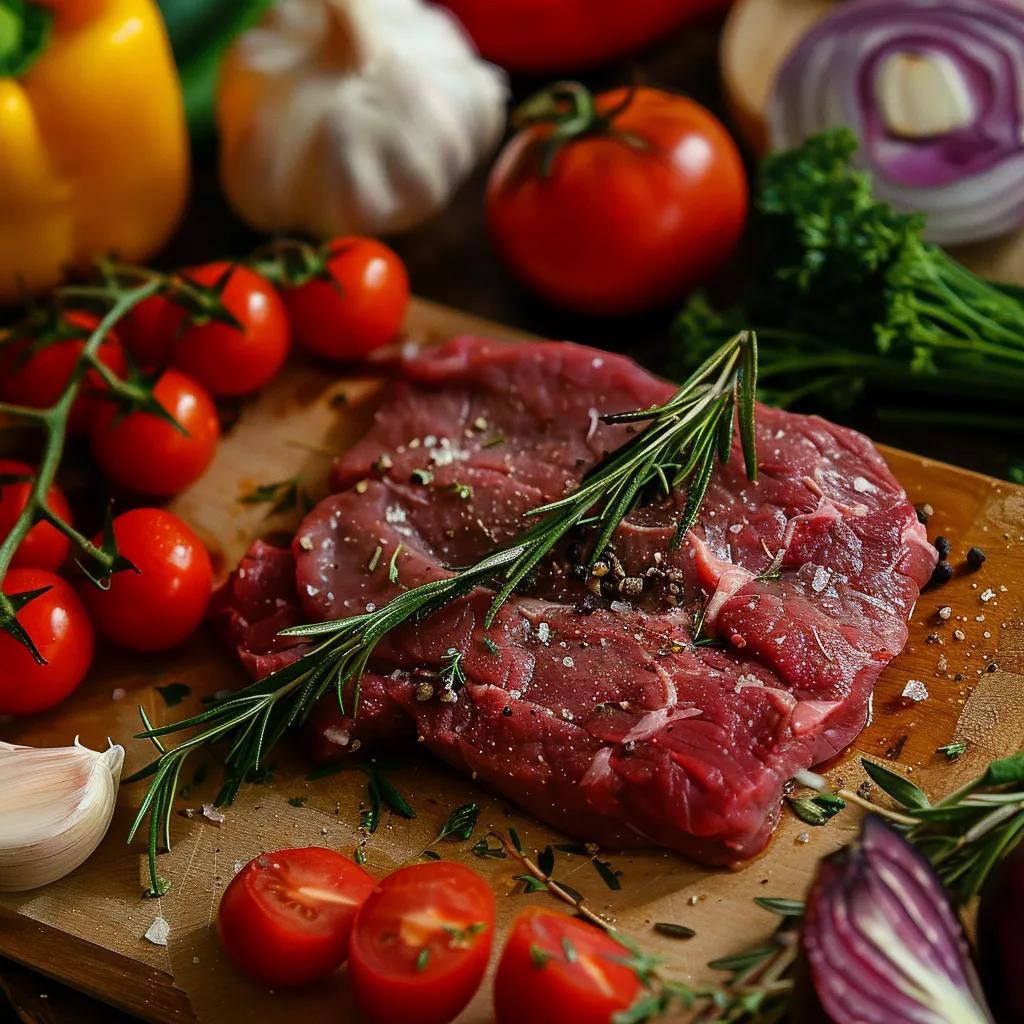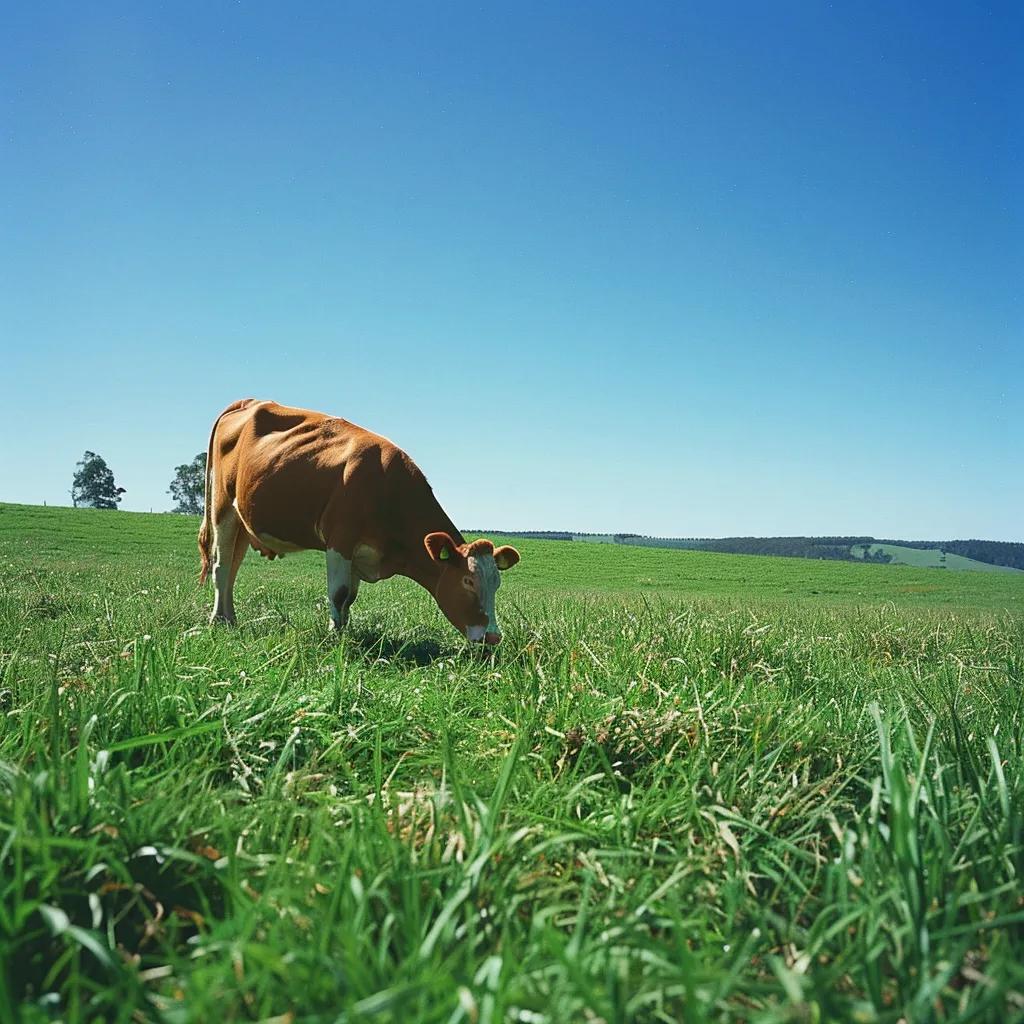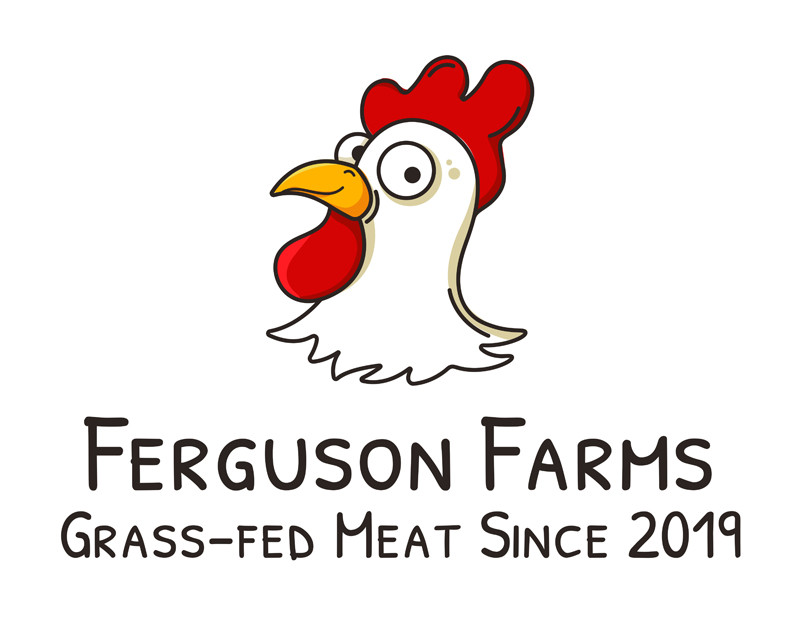Is Grass-Fed Beef Worth the Higher Cost Compared to Regular Beef? A Comprehensive Consumer Analysis
posted on
July 21, 2025
grass-fed beefdistinctionssimple protein contentbeefproteingrass-fed vs grain-fed beefretail markupgrass-fed supplyregenerative grazing techniquesgrass-fed beefgrass-fed and grain-fed beefpasture accesspasture-raised meatgrass-fed vs grain-fed beefreputable retailerswhat is bone barrow
Is Grass-Fed Beef Worth the Higher Cost Compared to Regular Beef? A Comprehensive Consumer Analysis

Consumers often pay up to 30% more for grass-fed beef than conventional grain-fed cuts, leaving many to ask: is it worth the higher cost compared to regular beef products? This in-depth analysis defines the premium, explains how nutrient density, production methods, environmental impact, animal welfare, flavor and cooking techniques all factor into that extra dollar. You will discover:
- Nutritional advantages—omega-3s, CLA, vitamins and lean fat profiles
- Price drivers—land use, labor and market forces
- Environmental trade-offs—carbon footprint, soil health and sustainability
- Ethical considerations—humane treatment and production differences
- Taste nuances and culinary best practices
- A decision framework for buying based on health, cost, planet and ethics
By mapping these factors under one roof, you can decide if grass-fed beef truly delivers value beyond the sticker price.
What Are the Nutritional Benefits of Grass-Fed Beef Compared to Conventional Beef?

Grass-fed beef delivers higher levels of heart-healthy and anti-inflammatory nutrients than grain-fed beef, thanks to pasture grazing that alters fatty acid profiles and micronutrient content. For example, cattle feeding on diverse forage accumulate more omega-3 fatty acids and conjugated linoleic acid (CLA), while also retaining vitamins A and E. A direct comparison clarifies these
.
| Entity | Attribute | Value per 100 g |
|---|---|---|
| Grass-Fed Beef | Omega-3 Fatty Acids | 80 mg (EPA + DHA) |
| Grain-Fed Beef | Omega-3 Fatty Acids | 16 mg (EPA + DHA) |
| Grass-Fed Beef | CLA | 0.5 g |
| Grain-Fed Beef | CLA | 0.2 g |
| Grass-Fed Beef | Vitamin E | 3.8 mg |
| Grain-Fed Beef | Vitamin E | 2.4 mg |
| Grass-Fed Beef | Total Fat | 5.5 g |
| Grain-Fed Beef | Total Fat | 9.0 g |
Nutritional Advantages of Grass-Fed Beef
Grass-fed beef contains significantly higher levels of omega-3 fatty acids, conjugated linoleic acid (CLA), and vitamins A and E compared to grain-fed beef. These nutrients contribute to improved cardiovascular health, immune function, and overall cellular health.
Daley, C. A., et al., Journal of Animal Science (2010)
This research supports the article's claims about the superior nutritional profile of grass-fed beef.
These nutrient advantages set the stage for understanding why grass-fed commands a premium and why its benefits extend beyond
.
How Do Omega-3 Fatty Acids in Grass-Fed Beef Improve Health?
Omega-3 fatty acids in grass-fed
improve cardiovascular health by reducing systemic inflammation and supporting healthy blood lipid levels through EPA and DHA. They enhance arterial flexibility, promote balanced heart rhythms and support cognitive function. Regularly consuming grass-fed cuts can complement fish or supplement-based omega-3 sources to promote long-term heart and brain health.
What Role Does Conjugated Linoleic Acid (CLA) Play in Grass-Fed Beef’s Nutritional Value?
Conjugated linoleic acid (CLA) in grass-fed beef promotes lean muscle development and supports immune function by modulating inflammatory pathways. CLA interacts with fat-metabolizing enzymes to improve body composition and has been associated with reduced risk markers for certain cancers. Including grass-fed beef in a balanced diet can elevate overall CLA intake compared to grain-fed alternatives.
How Do Vitamins and Minerals Differ Between Grass-Fed and Grain-Fed Beef?
Grass-fed beef contains up to 50% more vitamin A and twice the amount of vitamin E than conventional beef, owing to natural forage rich in carotenoids and antioxidants. It also offers higher levels of B vitamins, iron and zinc, which support energy metabolism, red blood cell formation and immune defense. These micronutrients work together to enhance nutrient density beyond basic
.
Is Grass-Fed Beef Leaner or Just Different in Fat Content?
Grass-fed beef is both leaner and compositionally different: it contains 30–50% less total fat and a higher ratio of monounsaturated to saturated fats. The leaner texture reduces overall caloric density, while healthier fats like omega-3s and CLA replace some saturated fat content. This lean makeup enhances nutrient efficiency and influences cooking methods for tenderness.
Why Is Grass-Fed Beef More Expensive Than Regular Beef?
Grass-fed beef incurs higher costs due to extended grazing periods, greater land requirements and more labor-intensive processing compared to grain-fed operations. These factors combine to raise production expenses and translate into a higher consumer price at retail.
| Entity | Attribute | Value / Impact |
|---|---|---|
| Pasture Grazing | Land per Animal | 1.5 acres vs. 0.2 acres |
| Growth Period | Months to Market | 24–30 months vs. 15–18 months |
| Small-Scale Processing | Cost per Pound | 25–40% higher |
| Specialized Handling | Labor Intensity | Manual sorting and cutting |
| Supply vs. Demand | Price Premium | 20–35% above conventional |
How Do Production Time and Land Use Affect Grass-Fed Beef Prices?
Longer production times—often 6–12 months longer than grain-finished cattle—tie up pasture resources and delay revenue for producers. Each animal requires more acreage to maintain soil health through rotational grazing. These land and time investments raise per-unit costs, which are passed along to consumers.
What Are the Labor and Processing Costs Behind Grass-Fed Beef?
Grass-fed beef processing often occurs at smaller, specialized facilities that rely on manual sorting, hand trimming and careful temperature control. Higher labor intensity and lower throughput contribute to per-pound costs that exceed industrial slaughterhouses. This artisanal approach ensures quality but adds to the
.
How Do Market Demand and Supply Influence Grass-Fed Beef Pricing?
Rising consumer interest in health, animal welfare and environmental sustainability has outpaced
from small family farms. Limited production scale and seasonal pasture availability create scarcity, allowing retailers to maintain a premium margin. Higher demand signals encourage producers to expand, but supply constraints keep prices elevated in the short term.
How Does Grass-Fed Beef Impact the Environment Compared to Conventional Beef?
Grass-fed beef farming influences greenhouse gas emissions, soil health and biodiversity in complex ways. While longer grazing periods can increase methane output per pound of beef,
promote carbon sequestration and ecosystem resilience. This environmental balance determines grass-fed systems’ overall sustainability.
What Is the Carbon Footprint of Grass-Fed Beef?
Grass-fed beef often generates comparable or slightly higher carbon emissions per pound than feedlot beef because cattle mature more slowly and emit methane over longer lifespans. However, rotational grazing practices can offset emissions by enhancing soil organic carbon stocks. Net climate impact depends on management intensity and local ecology.
How Does Grass-Fed Beef Farming Benefit Soil Health and Biodiversity?
Rotational pasture grazing stimulates root growth, increases organic matter and reduces erosion, thereby enhancing long-term soil fertility. Diverse forage species support a wider range of insects, birds and beneficial microbes. Over time, these regenerative practices build ecosystem resilience and improve water retention on grazing lands.
Environmental Impact of Grass-Fed Beef
Rotational grazing practices in
farming can enhance soil health by stimulating root growth, increasing organic matter, and reducing erosion. These practices contribute to carbon sequestration and ecosystem resilience, potentially offsetting greenhouse gas emissions.
Teague, W. R., et al., Advances in Agronomy (2011)
This citation provides evidence for the environmental benefits of regenerative grazing practices, as discussed in the article.
These ecological gains underpin a broader sustainability narrative.
Are Grass-Fed Beef Practices More Sustainable Than Industrial Beef Farming?
When managed with regenerative principles, grass-fed beef systems can outperform industrial feedlots in land health, water quality and biodiversity metrics. Although feedlot operations may yield beef more quickly, they often rely on monocropped grains, concentrated waste streams and fossil-fuel inputs. Grass-fed models align better with cyclical nutrient flows and long-term land stewardship.
What Ethical Considerations Should Consumers Know About Grass-Fed Beef?

Ethical grass-fed beef emphasizes natural behaviors, humane handling and reduced confinement, which contrast sharply with many grain-fed feedlot systems. These welfare standards resonate with consumers seeking meat produced under respectful treatment of animals.
How Does Grass-Fed Beef Promote Humane Treatment of Cattle?
Grass-fed cattle graze outdoors, expressing innate behaviors like roaming, foraging and social interaction. They are less likely to experience prolonged confinement, crowded pens or routine antibiotic use. This respectful approach aligns with animal welfare certifications and supports healthier herds.
Ethical Considerations in Beef Production
Grass-fed beef production often prioritizes humane treatment of cattle by allowing them to graze outdoors, express natural behaviors, and avoid prolonged confinement. This contrasts with the practices in many grain-fed feedlot systems, where animals may experience stress and increased disease risk.
Animal Welfare Approved, Animal Welfare Standards (2024)
This source supports the article's discussion of the ethical differences between
production methods.
What Are the Ethical Differences Between Grass-Fed and Grain-Fed Beef Production?
Grain-fed operations often finish cattle in feedlots where high-density confinement and rapid weight gain can lead to stress and increased disease risk. Grass-fed systems avoid these conditions, relying on natural diets and lower stocking densities. Ethical certification bodies audit
, handling protocols and overall animal well-being.
Does Grass-Fed Beef Taste Different and How Should It Be Cooked?
Grass-fed beef delivers a more robust, meat-forward flavor and leaner texture, requiring adjusted cooking methods to maximize tenderness and juiciness. Understanding these culinary differences ensures that grass-fed cuts shine on the plate.
What Flavor Profile Distinguishes Grass-Fed Beef from Regular Beef?
Grass-fed beef often tastes earthier and slightly gamey, with grassy, herbaceous notes that reflect the animal’s forage diet. The leaner fat content yields a firmer mouthfeel and a cleaner finish compared to the buttery, marbled texture of grain-fed beef. This distinct profile appeals to diners seeking a closer connection to
.
What Cooking Tips Help Maximize Tenderness and Flavor in Grass-Fed Beef?
To compensate for lower fat content and firmer muscle fibers, grass-fed beef benefits from:
.
- Bring to room temperature before searing to ensure even cooking.
- Reverse-sear method—low oven heat followed by a quick pan sear—to lock in juices.
- Use marinades or finishing butters rich in healthy oils to enhance mouthfeel.
Which Recipes Highlight the Unique Qualities of Grass-Fed Beef?
- Herb-Crusted Grass-Fed Ribeye seared and finished with rosemary-garlic butter
- Grass-Fed Beef Stir-Fry with colorful vegetables and a ginger-soy marinade
- Slow-Cooked Grass-Fed Beef Chili enriched with beans, tomatoes and cumin
How Can Consumers Make an Informed Choice About Buying Grass-Fed Beef?
Selecting quality grass-fed beef requires understanding labels, sourcing reliable vendors and balancing priorities across health, cost, environment and ethics. A structured approach ensures purchases align with personal values and dietary goals.
What Do Grass-Fed Beef Labels and Certifications Mean?
Labels such as “USDA-Certified Grass-Fed” or “American Grassfed Association (AGA) Certified” verify that cattle were fed only forage from birth to harvest, without confinement or growth-promoting antibiotics. Third-party audits confirm pasture access and humane handling. Recognizing these certifications guards against misleading marketing claims.
Armed with label knowledge, you can locate
.
Where Can You Find Quality Grass-Fed Beef?
- Local family farms selling direct via farm stands or CSAs
- Farmers markets featuring audited producers
- Specialty meat purveyors with online ordering and cold-chain shipping
- Select grocery chains stocking certified grass-fed lines
How Should You Weigh Health, Cost, Environment, and Ethics When Choosing Grass-Fed Beef?
Consumers can balance competing priorities by:
- Ranking personal values—prioritize heart-healthy nutrients, ethical treatment or sustainability
- Comparing price per nutrient—calculate cost relative to omega-3 and CLA content
- Considering environmental impact—opt for regenerative grazing models when possible
- Evaluating certifications—choose vendors audited for humane and pasture standards
Grass-fed beef offers demonstrable nutritional, environmental and ethical advantages that often justify its higher price for consumers who value health, planet and humane practices. While the leaner texture and distinctive flavor require adapted cooking methods, the benefits extend far beyond the plate. By understanding labels, sourcing reliably and aligning purchases with personal priorities, you can confidently decide whether grass-fed beef is worth the investment in your own diet.




